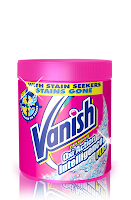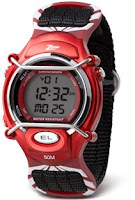
Saturday, June 19, 2010
Brand Update : Vivel Extending to Fairness Cream

Thursday, June 17, 2010
Marketing Strategy : Customer Service Starts From The Top
Zappos.com is an online retailer of fashion accessories predominantly shoes. The retailer is famous for its focus on customers. The key factor behind the stupendous success of Zappos.com is their customer service culture. The company is passionate about their customers and the culture of putting customer first runs through the entire company. The entire business model of this company is centred on customers and the CEO is the driving force behind this customer oriented culture. The company has a warehouse that is open 24X7 so a customer who orders at 11 PM gets a next day delivery. The company also has a 365 day return policy where a customer, if he is not satisfied, can return the product with in 365 days of purchase and get a refund.
Top Management Involvement
The quality of customer service is directly proportional to the involvement of senior leaders of the company. Although the actual execution of service is done at the lower levels of management strata, unless the senior leaders are held responsible for customer satisfaction, the process will not excel. But for that, customer service should be given its legitimate position in the management functions. In service firms it is natural that customer service is given its due importance. But in other companies there is no reference to customer service as a function.
When senior managers become involved in managing customer service and satisfaction, the function gets recognized in the organization. Priorities change and service does not become an irritant but a priority. Firms like Zappos.com,Ritz Carlton, Mitchells and Marriott thrive because of the intense involvement of top leadership in monitoring customer service. In firms like Zappos and Marriott, the CEOs take personal interest in customer service initiatives.
Employee Motivation
Although it may seem very basic to state that employee motivation is critical to any customer service initiative, many firms fail to practice this obvious dictum. Since the frontline employees are the implementers of customer service, it is absolutely essential that they are given the necessary authority and responsibility to handle any request from the customers. This perhaps will the main reason why consumers do not appreciate being serviced by call centre executives. These outsourced firms usually do not have any authority to solve the issues of customers.
Randy and his sister approached the store and was surprised when the store staff replaced the shakers for free and even apologized for not packing it correctly. The author then mentions that his family later went on to give more than $100,000 worth of business to Disney Land. The salt and pepper shaker was not worth more than $10 but the small gesture by the Disney Staff created goodwill that is worth millions.
Such customer service excellence will not happen unless the employees are intrinsically motivated. The motivation comes from the responsibility and the freedom that comes with the job. It is in this context that organisational culture becomes critical. While processes can make customer service error free, spontaneity can come only from individuals. Organizations should strive to bring that spontaneity into the customer service.
Another story about customer service spontaneity -
Bill Marriott , the Chairman and CEO of Marriott International, in his blog once narrated a story about an Associate who gave his pants to one of the guests . The guest who came for a business meeting found that he accidently packed his wife’s slacks instead of his own. He realized this only minutes before the meeting began. The chances of going to a store to buy one and making it to the meeting on time were minimal. One of the Marriott Associates noticed that he happened to be of the same size as the guest and offered him the pair of pants he was wearing. The pants were of perfect fit and the guest went to the meeting on time. The Associate managed with his extra casual pants till the grateful guest returned.
(source : http://www.blogs.marriott.com/search/default.asp?item=2358646).
It is not that companies today are not aware of these basics but the fact is that in pursuit of high growth, often these fundas take the backseat.
Sunday, June 13, 2010
Brand Update : Sugar Free Natura - Expanding Brand Usage

Tuesday, June 08, 2010
Brand Update : Vanish Gets a Brand Ambassador

Sunday, June 06, 2010
Marketing Strategy : Four Pillars Of Customer Focus
The Four Pillars of Customer Focus
Originally Published Here at Adclubbombay.com
Customer focus is one of the most used jargons in the marketing lexicon. Despite being accepted as an important strategy, many firms have not yet been capable of delivering exceptional customer service and focus in their operations.
Customer focus is a choice and the choice has to be made at the highest management level. Being customer focused is an expensive proposition. It is resource intensive and needs hands-on management from senior leadership of the company. More than money, customer focused strategy depend on human resource. The investment needed for maintaining customer focus is the time and dedication of all management levels towards the goal of service excellence. Most of the firms which aspire to be customer focused fail because of the lack of involvement of top management in customer-related activities.
Most companies invest their resources in creating processes and automating customer touch points. After this investment, the management leaves the customer management to these insensitive machines and algorithms. The entire process will be a waste unless there is a human element in it.
For any organisation who aspire to be customer-centric should start by building a strong foundation .Without a strong foundation, customer centric activities will lack in their effectiveness.
Customer knowledge, Culture, Human Resources and Conflict resolution are the four pillars of a customer focused organisational strategy.
Customer Knowledge
Customer profiling is the first step towards building customer focus. This is one of the most difficult phases in the quest towards customer focus. The depth of customer focus in a company is directly proportional to the depth of the customer information collected. The effectiveness of all customer-related promotions will depend on the extent to which the collected information is being used at the customer touch points.
For example in a business to business environment, firms are sitting on a huge pile of customer information. The information from the past interactions with the customer, the information from the past sales data are all available with the company. How well this information is available to the sales force will determine the effectiveness of any customer related campaign run by the company. While most firms collect customer information, this information are seldom updated or distributed to the concerned personnel.
Another important task for the managers is to identify the customer group that the organisation should focus on. It is near impossible for organisations to satisfy every customer. Some customers may be unprofitable for the company to serve. The management should be able to take informed decision on the customer groups which it will have to focus on. Once these groups are identified, firms must orient its organisation to deliver exceptional service to these customers.
Customer-Centric Organisational Culture
The second most important pillar of customer focused organisational strategy is the culture. Customer-centric organisational culture is where the entire organization is tuned to deliver exceptional service to the customer. Customers become the centre around which the organization is built.
The Chief Executive becomes the Chief Customer Officer. Every process and actions of the firm is prepared with customer in mind. Although this proposition may sound theoretical, companies like Marriott, P&G and FedEx have built their business around a customer focused strategy.
Human Resource
People form the third pillar of a customer focused organisation. The employees are the vital interface between the customer and the company. Customer focused organisations invest huge resources in developing a team of highly trained customer- care executives.
It is critical for organisation to understand the importance of front-line employees who deal directly with the customers. These employees represent the face of the organisation. There has to be clear role clarity for employees who interact with the customers. Customers always prefer a single contact point with the selling organisations. Customer focused organisations thrive because their entire organisation is created to optimize customer touch points. The customer –care executives are given enough authority and responsibilities to deal with customer requirements. Cases which are beyond their authority are escalated to higher levels.
Conflict Resolution.
Handling customer conflicts is the litmus test of the effectiveness of any customer-centric organisation. When there are no conflicts or complaints, customer management is not a daunting task.
The real depth of customer focus is revealed when there is a complaint or a conflict. As customers, we all have faced situations where our complaints go unresolved. A recent survey conducted on mobile phone users revealed that unresolved complaint was one of the major reasons for customer churning in Post-paid customer segment.
Customer focused organisations have a robust complaint handling mechanism backed by strong process and also sufficient budgets. These organisations have a system where complaints or conflicts are addressed within a stipulated time frame. The unresolved complaints are escalated to higher levels of management and necessary actions are taken at each levels of management for proper remedial actions.
Thursday, June 03, 2010
Titan Zoop : Be Cool

In 1998-99, Titan tried to tap the market with a brand Dash. But the brand failed to catch the fancy of the market at that point of time. Analysts says that Dash was too early for the Indian consumers. During that time, parents were not that interested in spending on kid's accessories like Watches.
Watch the ad here : Zoop
Zoop faces competition from the host of unorganized players in the market along with cheap Chinese imports. For Zoop, budget competition will also be something to be concerned about. Budget competition is the competition for the money . Budget competition for Zoop will be those kid's products across various categories that falls in the price band of Rs 350- Rs 1000. That include toys, clothes, video games, etc. If you look at the launch campaign of Zoop , the brand subtly addresses that competition by pointing at the ' need ' for a watch.
Zoop has rightly positioned itself on the style factor and I am sure many young customers will fall for it.